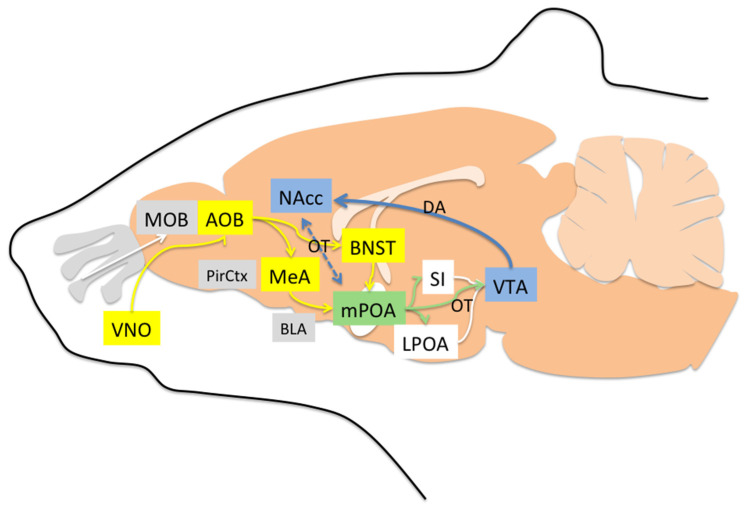Figure 1.
Sagittal drawing of brain olfactory pathways involved in acceptance, offspring social recognition, care motivation, and inhibition of rejection. Nonvolatile odor molecules are processed by the accessory pathway (yellow) via the vomeronasal organ (VNO), accessory olfactory bulb (AOB), bed nucleus of the stria terminalis (BNST), medial amygdala (MeA), and medial preoptic area (mPOA, green). The mPOA projects to the lateral preoptic area (LPOA), substantia innominata (SI), and ventral tegmental area (VTA, blue), which sends dopaminergic projections to the nucleus accumbens (NAcc, blue). Volatile odor molecules are processed by the main (gray) olfactory epithelium (MOE), main olfactory bulb (MOB), and piriform cortex (PirCtx), and from there to the NAcc and mPOA (which interact via oxytocin “OT” and dopamine “DA”). The basolateral (BLA) amygdala and prefrontal cortex (not shown) participate in rejection and fear.

